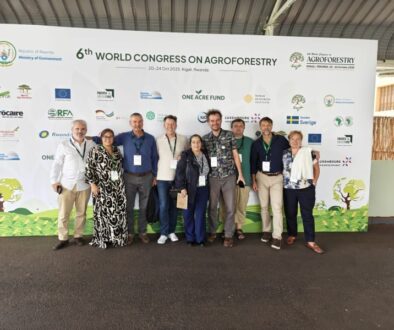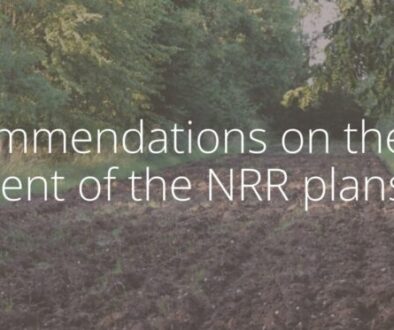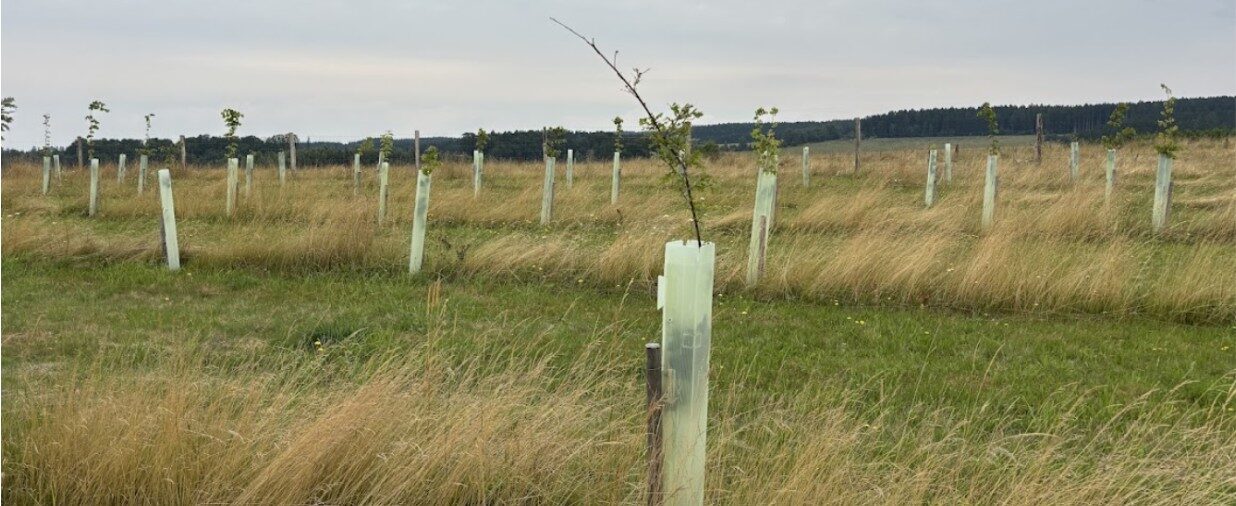
CAP & Agroforestry - success in Czech Republic Prepared by Czech Association for Agroforestry (CSAL) and EURAF
As discussions about the next Common Agricultural Policy (CAP) intensify (post-2027), we are spotlighting how different EU countries are supporting agroforestry. We asked our members to share their biggest wins and lessons learned, and the Czech Republic’s case truly stands out.
Our colleagues from the Czech Association for Agroforestry (CSAL) have demonstrated not only a successful national approach to introducing an agroforestry measure for the CAP 2023-2027, but also a significant interest from the farming community, leading to good results in new agroforestry establishment.
Get informed on agroforestry in the Czech Republic and view the agroforestry map.
The CAP agroforestry measure in detail
Agroforestry was introduced as a new measure for the CAP 2023-2027 programming period, stemming from work that began in 2019. The critical goal was to set the conditions of the measure to help farmers overcome concerns about planting trees on agricultural land, thereby supporting the establishment of functional agroforestry systems.
Agroforestry support is currently delivered through two key interventions of the Czech CAP Strategic Plan: 42.73 Establishment of the agroforestry system and 26.70 Maintenance of the established agroforestry system. The detailed conditions are set out in the crucial Government Decree No 140/2023 Coll., known as the Agroforestry Regulation. Once established, farmers register their agroforestry parcels in the Land Parcel Identification System (LPIS) as new crop type subcategories on either arable land or permanent grassland.

Alely cropping plot in Southerm Moravia: University Agriculture Enterprise in Žabčice.
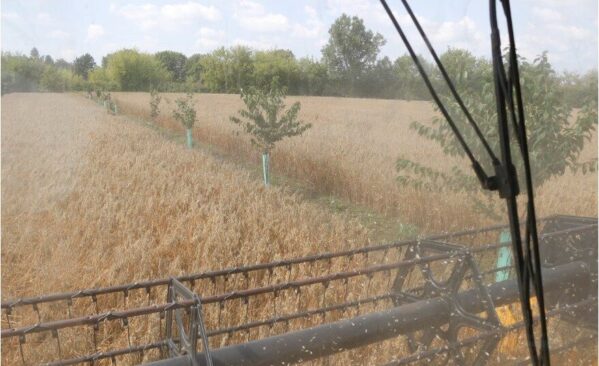
From CSAL photo archive.
What Types of Agroforestry Get Supported?
The measure supports two main categories, both requiring a density of 100 trees per hectare (ha). The first is silvoarable agroforestry, which involves forest or fruit trees grown in an alley cropping design on arable land. The second is silvopastoral agroforestry, which focuses on trees established on permanent grasslands. A comprehensive list of permitted species was prepared, containing 46 forest and 13 fruit species.
The financial support is clearly structured: establishment (Intervention 42.73) provides a one-off payment of EUR 4,353 per hectare. For maintenance (Intervention 26.70), a yearly support of EUR 754 per hectare is provided for the following five years, requiring a five-year commitment.
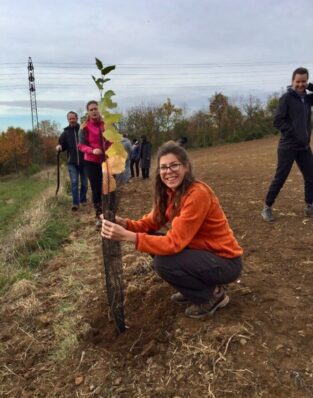
Establishment of a new agroforestry system in arable land – Úholičky.
Two years of success: growth in 2024
The initial response from the farming community was exceptional in the first year (2023), but the data from 2024 shows good growth, suggesting widespread adoption and confidence in the measure.
In 2023, the first year of operation, 87 farmers established 610.3 hectares of agroforestry systems. 2024 saw these figures nearly double. By the end of May 2024, the Declaration of Interest reached 211 applicants covering 3,029.0 hectares—a figure more than double the area declared in the previous year. This high interest translated directly into established land. By the end of November 2024, 126 farmers had submitted an Application for Support for a massive 1,140.0 hectares of new agroforestry systems. Moreover, the balance between silvoarable and silvopastoral AF has equilibred – app. 50% and 50% in 2024. It shows increased interests of farmers for silvoarable systems that are considered as more demanding in terms of agro-technical managements for their complex interactions between trees and crops.
Overall, the established area in 2024 was 186.8% higher than in 2023. Cumulatively, in the first two years of the measure, Czech farmers have established a total of 1,750.3 hectares of agroforestry. Moreover, nearly half of the established agroforestry systems are on arable land, where the trees are most needed.
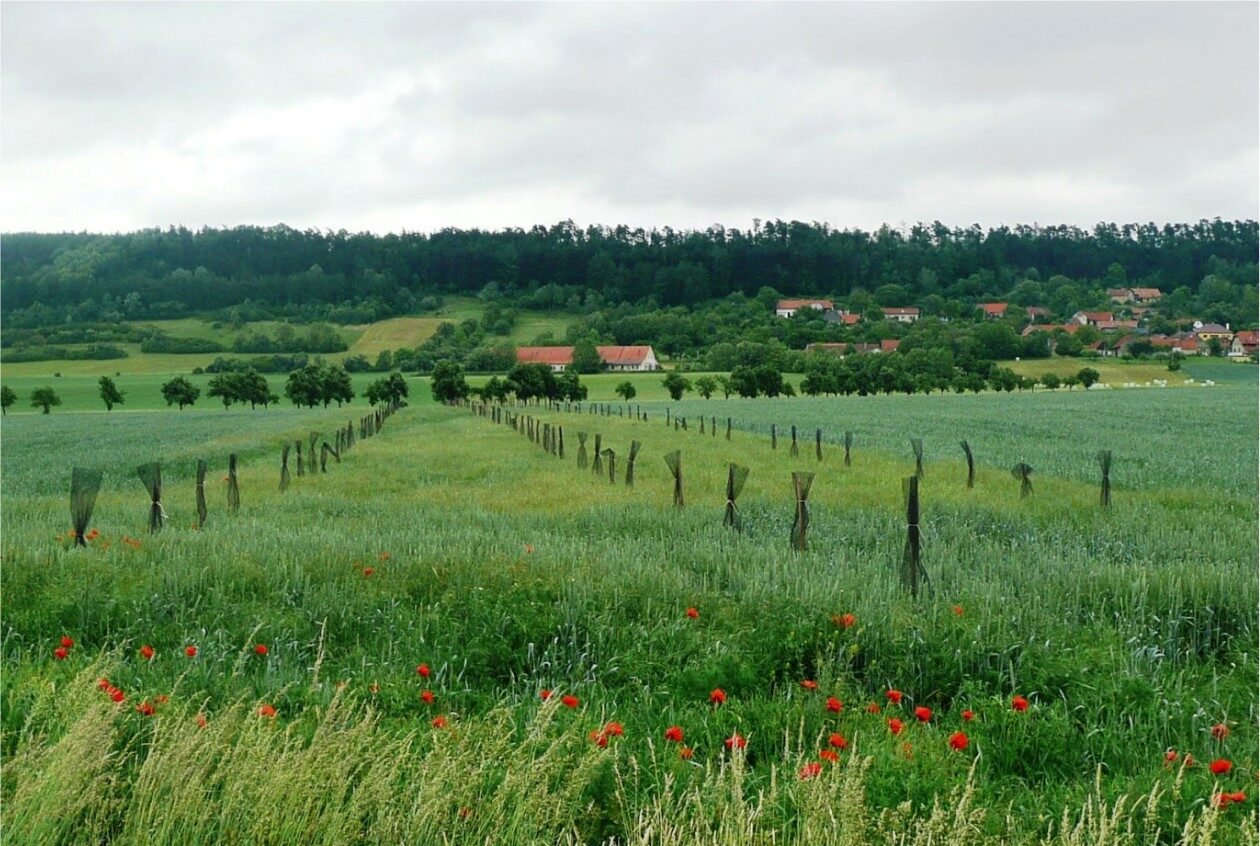
From CSAL photo archive.
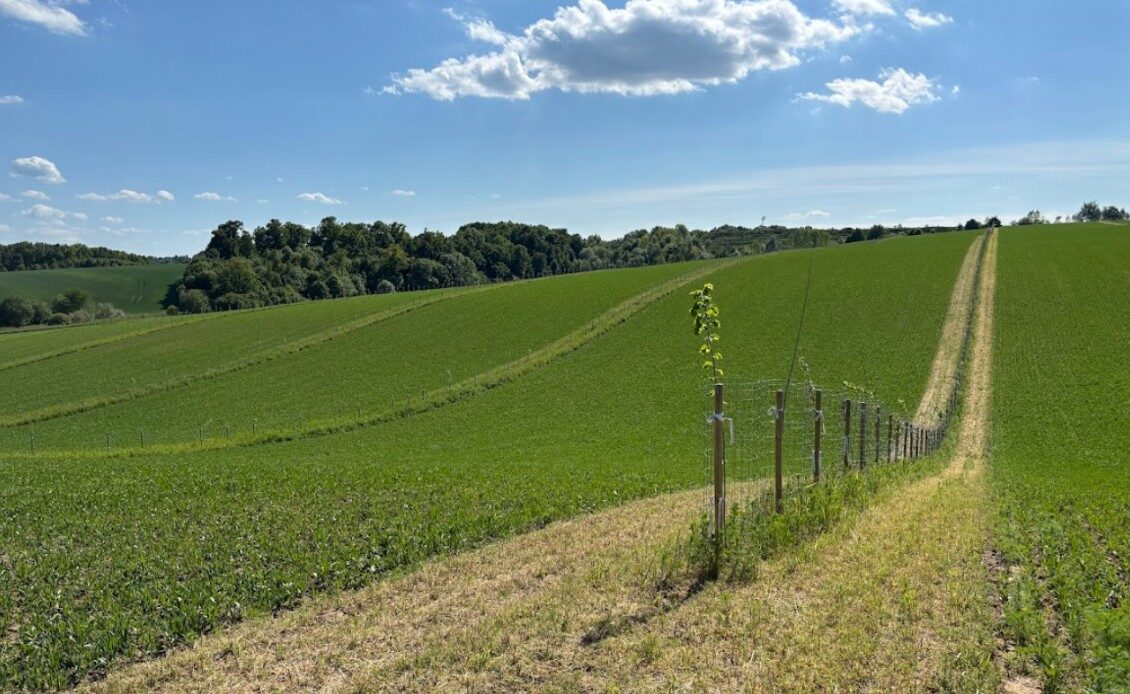
From CSAL photo archive.
Food for thought for the future
While the establishment numbers are strong, the difference between the declared area and the established area offers valuable lessons for fine-tuning future CAP measures. Several applicants ultimately planted a smaller area than declared due to key factors. Some were hesitant to plant trees on land they did not own. Others decided on a phased approach, opting to divide their soil blocks to trial agroforestry first on a smaller portion, with the intention of submitting a declaration for the remaining part in a subsequent year. Finally, some applicants did not utilise the option to plant fruit trees, establishing their systems only with forest trees. These points highlight areas where future regulations could be adapted to maximize uptake.
Conclusion
Despite the relatively strict agroforestry regulation, the great surge in farmer interest during the second year confirms the measure’s success. This positive response demonstrates that a well-structured financial support package, backed by dedicated advisory services, can dramatically accelerate the adoption of agroforestry. Looking ahead to the next CAP, it is imperative that other countries recognise the Czech Republic as a blueprint and adopt similar effective methods.
Lear more about agroforestry in Czech Republic and contact Czech Association for Agroforestry (CSAL).
